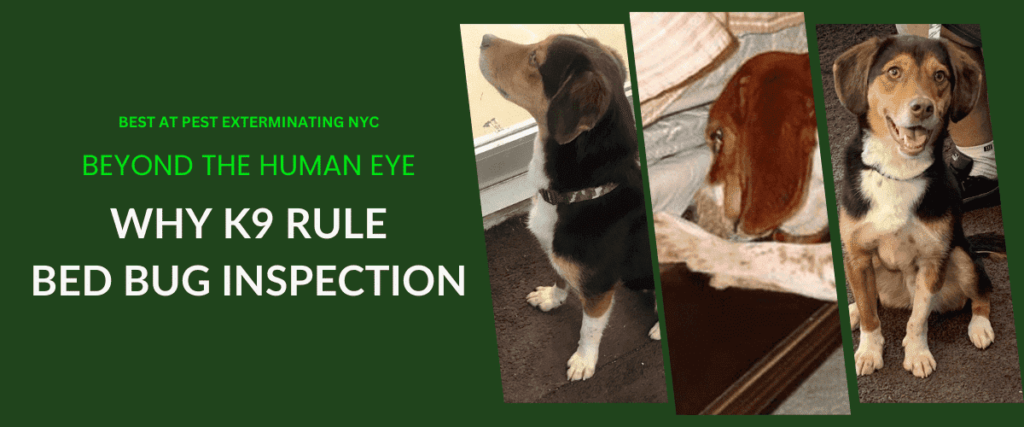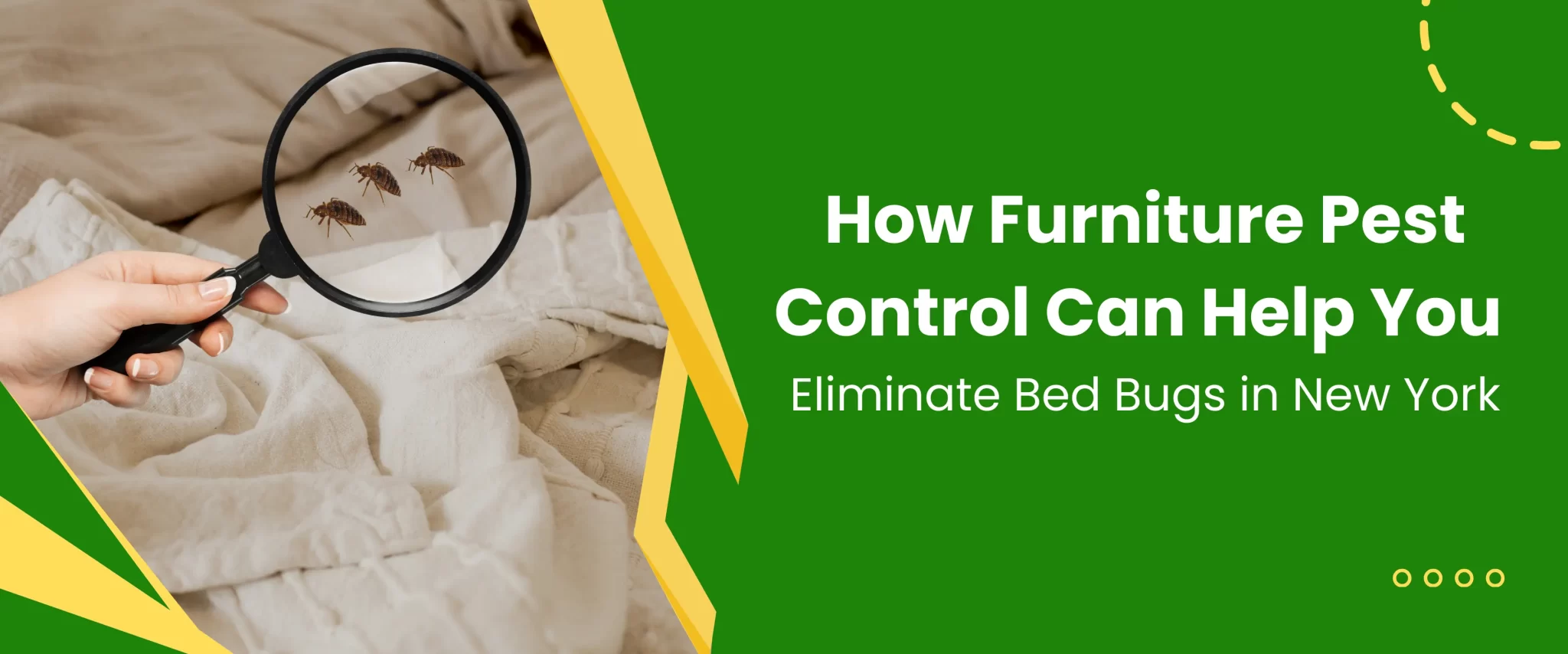
How Furniture Pest Control Can Help You Eliminate Bed Bugs in New York
Bed bugs, once considered a distant memory, have made a resurgence in recent years, causing significant discomfort and stress for residents of New York City. These tiny, parasitic insects can infest homes, offices, and even public transportation, leaving behind itchy bites and psychological distress.
New York City, with its bustling population and constant influx of travelers, has become a hotspot for bed bug infestations. These insects are adept at hitchhiking on luggage, clothing, and other personal belongings, making it easy for them to spread from one location to another. This has led to a surge in bed bug-related complaints and a growing demand for effective pest control solutions.
The Importance of Furniture Pest Control in Combating Bed Bugs
Furniture is a prime hiding spot for bed bugs, providing them with a safe and comfortable environment to lay eggs and feed. Bed bug infested furniture removal can act as a breeding ground for these pests, making it difficult to eradicate them entirely. Furniture pest control involves targeted treatments designed to eliminate bed bugs from furniture and prevent future infestations. This approach is essential in achieving a comprehensive solution to the bed bug problem.
Identifying Bed Bug Infested Furniture
Bed bugs are skilled at hiding in various nooks and crannies, especially within furniture. Early detection is crucial to prevent the infestation from spreading and to minimize the cost of treatment. Here are some common signs of bed bug infestation in furniture:
Couches and Other Upholstered Items
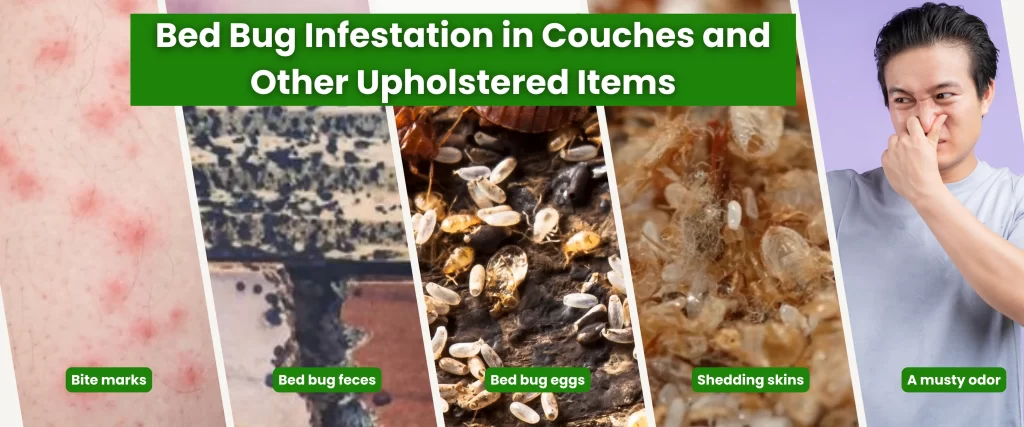
- Bite marks: These are often red, itchy, and appear in a zigzag pattern.
- Bed bug feces: These are tiny, dark spots that may resemble pepper or poppy seeds.
- Bed bug eggs: These are small, white, and often found in cracks and crevices.
- Shedding skins: Bed bugs shed their skins as they grow, leaving behind small, brownish-red casings.
- A musty odor: Infested furniture may emit a musty or unpleasant smell due to the presence of bed bugs and their waste.
Mattresses
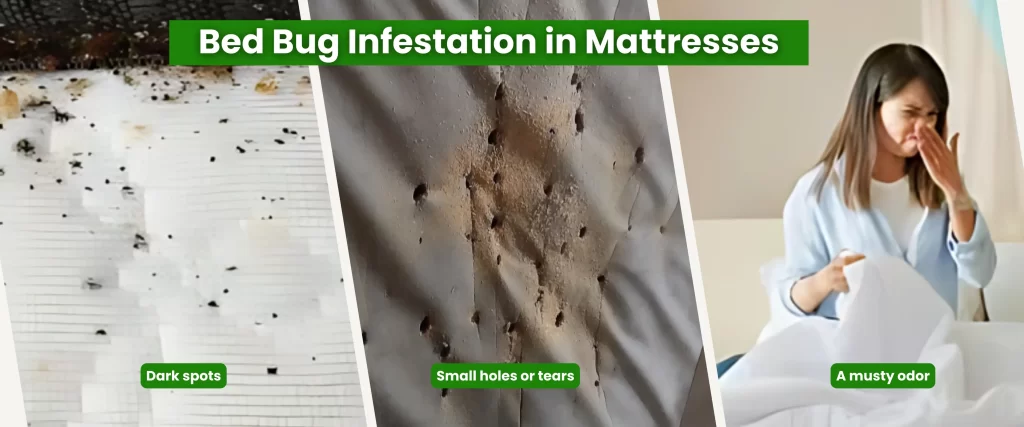
- Dark spots: These may be bed bug feces or shed skins.
- Small holes or tears: Bed bugs may burrow into mattress seams or create small holes.
- A musty odor: Similar to upholstered furniture, infested mattresses may emit a foul smell.
Importance of Early Detection
Identifying bed bug infestations early on is crucial for several reasons:
- Minimizing infestation spread: The sooner bed bugs are detected, the easier it is to prevent them from spreading to other areas of the home.
- Reducing treatment costs: Early detection can help to reduce the cost of professional pest control treatments.
- Preventing psychological distress: Bed bug infestations can cause significant stress and anxiety. Early detection and treatment can help to alleviate these emotional burdens.
Effective Furniture Pest Control Methods
Bed bug infestations can be challenging to eradicate, especially when furniture is involved. Professional pest control techniques and targeted DIY approaches can be highly effective in eliminating these pests.
Professional Pest Control Techniques
Professional pest control companies employ a variety of techniques to treat bed bug infestations, including:
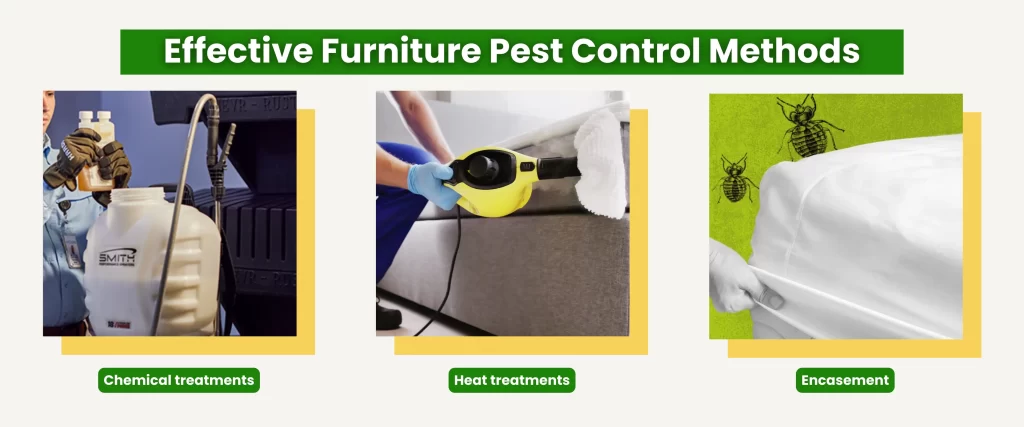
- Chemical treatments: These involve applying specialized insecticides to infested areas, including furniture. Professional technicians are trained to select the most appropriate chemicals and ensure safe and effective application.
- Heat treatments: This method involves raising the temperature in a sealed room or chamber to a level that kills bed bugs and their eggs. This is a non-chemical option that can be particularly effective for treating furniture.
- Encasement: Infested mattresses and box springs can be encased in protective covers that prevent bed bugs from entering or exiting.
DIY Furniture Treatment: HEPA Vacuuming
In addition to professional treatments, HEPA vacuuming can be a valuable tool in combating bed bugs on furniture.
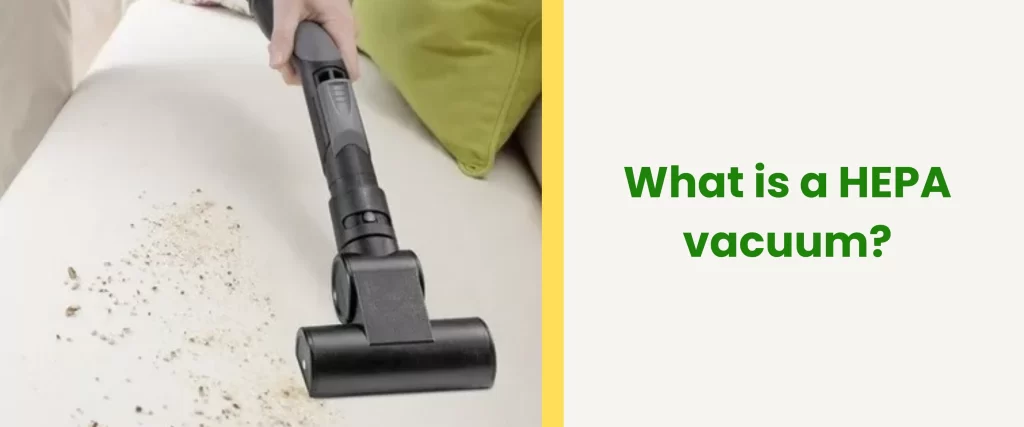
What is a HEPA vacuum? A HEPA (High-Efficiency Particulate Air) vacuum is a type of vacuum cleaner that is equipped with a specialized filter capable of capturing extremely small particles, including bed bugs and their eggs. This makes it an effective tool for removing these pests from furniture.
How to use a HEPA vacuum to treat furniture:
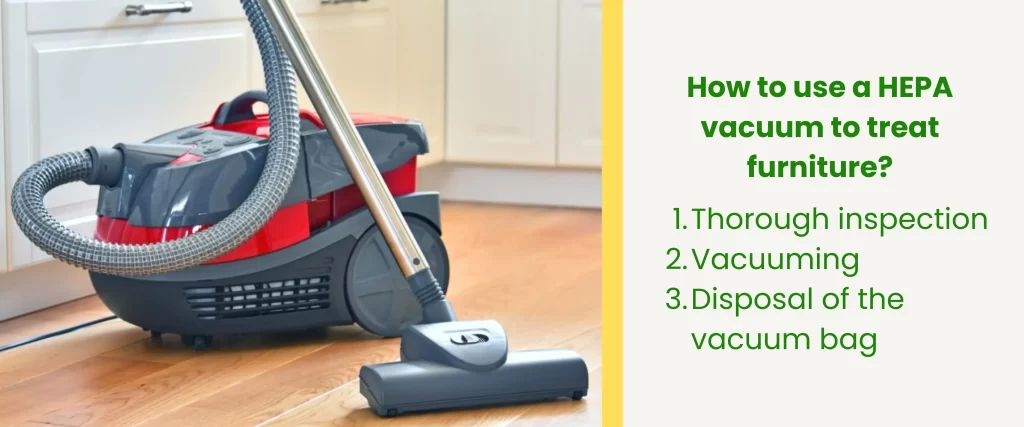
- Thorough inspection: Carefully examine the furniture for signs of bed bugs, such as bite marks, feces, or eggs.
- Vacuuming: Use the HEPA vacuum to thoroughly clean all surfaces of the furniture, including cracks, crevices, and seams. Pay particular attention to areas where bed bugs are likely to hide, such as along the edges of cushions and in the folds of fabric.
- Disposal of the vacuum bag: After vacuuming, carefully seal the vacuum bag and dispose of it in a secure manner to prevent bed bugs from escaping.
Why is a HEPA vacuum essential for removing bed bugs from infested furniture? HEPA vacuum cleaners are highly effective at removing bed bugs and their eggs from furniture for several reasons:
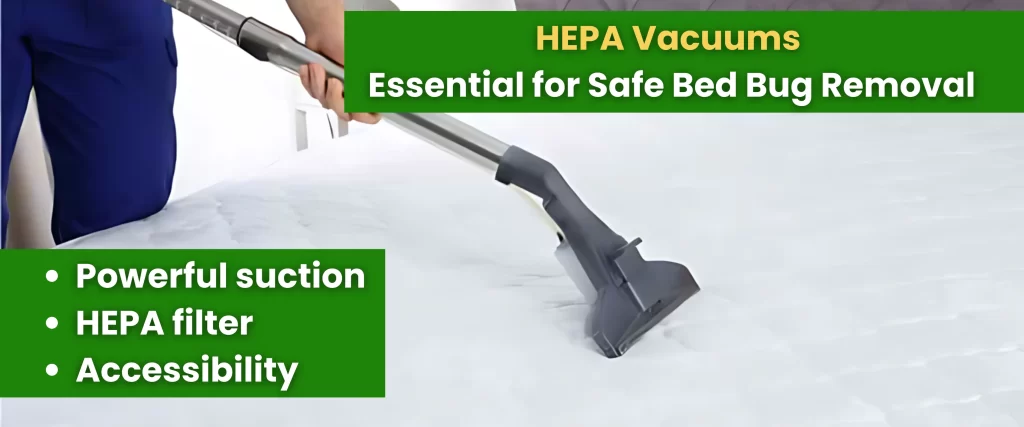
- Powerful suction: HEPA vacuums are designed to provide strong suction, which can help to dislodge bed bugs and their eggs from various surfaces.
- HEPA filter: The HEPA filter captures even the smallest particles, ensuring that bed bugs and their eggs are not released back into the environment.
- Accessibility: HEPA vacuums are often equipped with specialized attachments that allow you to reach into narrow crevices and other hard-to-reach areas.
Techniques for Vacuuming Mattress
When vacuuming a mattress, follow these steps:
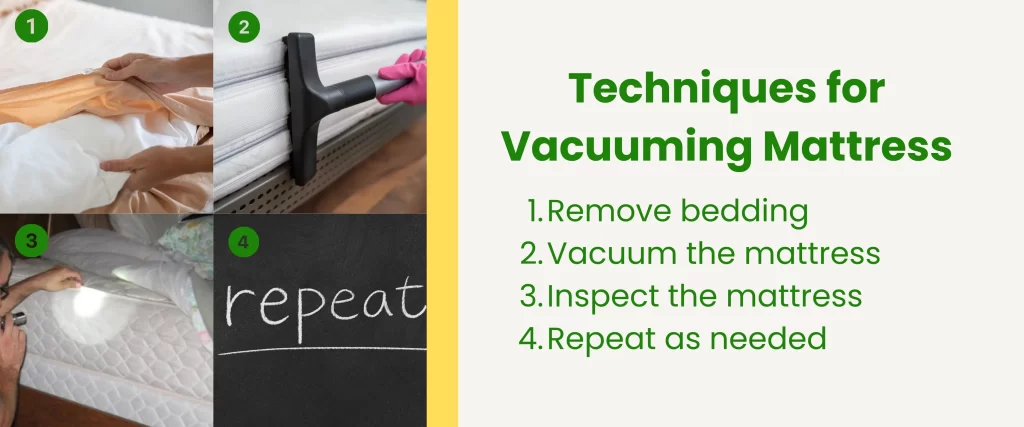
- Remove bedding: Take off all bedding, including sheets, blankets, and pillowcases, and wash them in hot water.
- Vacuum the mattress: Use a handheld vacuum cleaner with a specialized attachment to carefully vacuum the entire surface of the mattress, paying particular attention to seams, edges, and tufts.
- Inspect the mattress: After vacuuming, carefully inspect the mattress for any remaining bed bugs or eggs.
- Repeat as needed: Vacuum the mattress regularly to help prevent future infestations.
Best Practices for Bed Bugs and Vacuuming After Treatments
- Thorough cleaning: After completing a bed bug treatment, clean all surfaces of the furniture and surrounding areas thoroughly to remove any remaining bed bugs or their eggs.
- Regular vacuuming: Continue to vacuum the furniture and other affected areas regularly to prevent future infestations.
- Dispose of vacuum bags properly: Seal the vacuum bags securely and dispose of them in a manner that prevents bed bugs from escaping.
- Monitor for signs of re-infestation: Keep an eye out for signs of bed bugs, such as bite marks or shed skins, and take immediate action if you notice any evidence of a re-infestation.
Wrapping and Protecting Furniture: A Crucial Step in Bed Bug Control
Wrapping infested furniture in plastic sheeting or furniture wraps is a vital step in preventing the spread of bed bugs during removal or treatment. By sealing the furniture, you can significantly reduce the risk of bed bugs escaping and infesting other areas of your home or spreading to other locations.
Importance of Using Furniture Wraps
- Containment: Furniture wraps create a barrier around infested items, preventing bed bugs and their eggs from escaping.
- Prevention of spread: By sealing the furniture, you can minimize the risk of bed bugs spreading to other areas of your home or to neighboring properties.
- Facilitates treatment: Wrapping infested furniture can make it easier for pest control professionals to treat the items without worrying about bed bugs escaping.
How to Effectively Wrap Furniture with Bed Bugs Infestation
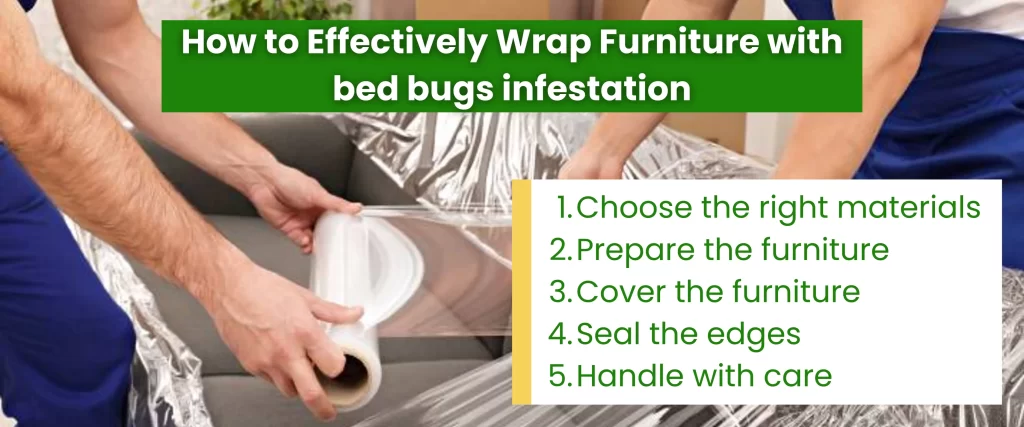
- Choose the right materials: Opt for heavy-duty plastic sheeting or specialized furniture wraps that are designed to seal tightly and prevent bed bugs from escaping.
- Prepare the furniture: Clear the area around the furniture to provide ample space for wrapping.
- Cover the furniture: Carefully drape the plastic sheeting or furniture wrap over the infested item, ensuring that it completely covers all surfaces.
- Seal the edges: Use duct tape or other secure methods to seal the edges of the plastic sheeting or furniture wrap tightly, preventing any gaps or openings.
- Handle with care: Wear gloves and avoid touching the infested furniture directly to minimize the risk of spreading bed bugs.
How to Get Rid of Furniture with Bed Bugs
If you have furniture that is heavily infested with bed bugs, it may be necessary to dispose of it to prevent the infestation from spreading. Here’s a step-by-step guide for safely bed bug furniture removal:
How to Wrap a Bed Bugs infested Couch in Plastic for Disposal
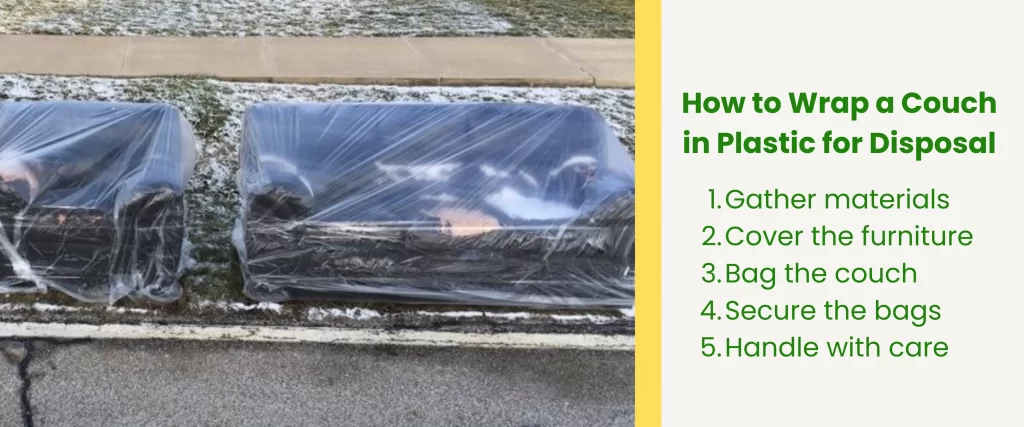
- Gather materials: You’ll need large, heavy-duty plastic bags, duct tape, and gloves.
- Cover the furniture: Place the couch on a plastic sheet or tarp to protect the floor.
- Bag the couch: Carefully wrap the couch in the plastic bags, ensuring that there are no gaps or openings.
- Secure the bags: Use duct tape to securely seal the plastic bags around the couch.
- Handle with care: Wear gloves and avoid touching the couch directly to minimize the risk of spreading bed bugs.
Safe Disposal Methods
- Local landfill: Contact your local landfill to inquire about their policies for disposing of bed bug-infested furniture. Some landfills may have specific requirements or restrictions.
- Professional removal service: Consider hiring a professional removal service to handle the disposal of infested furniture. They can safely transport and dispose of the items, minimizing the risk of spreading bed bugs.
- Incineration: If available, consider having the infested furniture incinerated. This is a highly effective method for destroying bed bugs and their eggs.
Important considerations:
- Avoid selling or donating infested furniture: This can spread the infestation to others.
- Clean the area: After removing the infested furniture, thoroughly clean the area where it was located to prevent any remaining bed bugs from spreading.
- Professional treatment: Even after removing infested furniture, it’s important to have the entire home treated by a professional pest control company to ensure that all bed bugs have been eliminated.
Prevention and Ongoing Maintenance: A Bed Bug-Free Home
Preventing future bed bug infestations requires a combination of proactive measures and ongoing maintenance. Furniture pest control plays a vital role in keeping your home free from these unwanted pests.
Tips for Preventing Future Bed Bug Infestations
- Inspect new furniture: Before bringing new furniture into your home, carefully inspect it for signs of bed bugs.
- Check luggage and belongings: When traveling, inspect your luggage and personal belongings for bed bugs upon return.
- Wash bedding regularly: Wash bedding and linens in hot water to kill any potential bed bugs.
- Avoid secondhand furniture: If purchasing secondhand furniture, inspect it carefully and consider having it professionally treated before bringing it into your home.
- Educate yourself: Learn about bed bugs and their habits to better recognize signs of an infestation and take appropriate action.
The Importance of Regular Inspections and HEPA Vacuuming
Regular inspections and HEPA vacuuming are essential components of ongoing pest control maintenance.
- Regular inspections: Conduct periodic inspections of your furniture, bedding, and other areas of your home for signs of bed bugs. This can help to detect infestations early and take appropriate action.
- HEPA vacuuming: Vacuuming your furniture and other areas of your home with a HEPA vacuum cleaner can help to remove bed bugs and their eggs. HEPA vacuums are particularly effective because they have powerful suction and specialized filters that capture even the smallest particles.
Conclusion
Furniture pest control is a crucial component of combating bed bug infestations in New York. By targeting these resilient pests within their preferred hiding places, furniture-specific treatments can significantly reduce the risk of re-infestation and provide lasting relief.
When dealing with infested furniture, it is highly recommended to seek professional pest control services. Experienced technicians possess the knowledge and tools to effectively eliminate bed bugs and prevent future infestations. They can also provide guidance on safe furniture disposal and offer valuable advice on preventing re-infestation.
To ensure long-term success in bed bug control, consider the following tips:
- Regular inspections: Conduct periodic inspections of your furniture and bedding to detect signs of bed bugs early.
- HEPA vacuuming: Use a HEPA vacuuming bed bugs and their eggs from furniture and other areas of your home.
- Professional treatments: If you suspect a bed bug infestation, don’t hesitate to contact a professional pest control company for expert assistance.
- Preventative measures: Take proactive steps to prevent bed bugs from entering your home, such as inspecting secondhand furniture and washing bedding regularly.
Tired of battling bed bugs in New York?
Best@pest exterminating offers professional and effective bed bug extermination services tailored to your specific needs. Our experienced technicians utilize advanced techniques and high-quality products to eliminate these pesky pests from your home.
Don’t let bed bugs disrupt your peace of mind. Contact Best@pest exterminating on 718-284-7378, 718-284-7379 or visit website: https://bestatpestnyc.com/ today to schedule inspection and quote and experience the Bestatpest difference.


